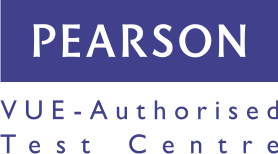Odpowiednikiem tego szkolenia jest kurs Szkolenie 20480 "Programowanie w HTML5 z JavaScriptem i CSS3".
To pięciodniowe szkolenie prowadzone przez instruktora jest przeznaczone dla specjalistów IT zainteresowanych zostaniem programistami stron internetowych po stronie klienta, którzy potrzebują szybkiego startu we wszystkich trzech technologiach. Kurs obejmuje ponad 30 ćwiczeń, zapewniając szybkie praktyczne wprowadzenie do trzech głównych języków po stronie klienta: HTML, CSS i JavaScript. Studenci powinni być przygotowani na szybkie pokrycie dużej ilości materiału.
Ten kurs obejmuje te same technologie co wycofany Kurs 20480-C: Programowanie w HTML5 z JavaScriptem i CSS3. Podobnie jak tamten kurs, ten kurs skupia się na wykorzystaniu HTML, CSS i JavaScript do tworzenia stron internetowych, implementowania logiki programowania, definiowania i używania zmiennych, wykonywania pętli i rozgałęzień, przechwytywania i walidacji danych wprowadzanych przez użytkownika, przechowywania danych i tworzenia dobrze zorganizowanych aplikacji. Jednak ten kurs nie obejmuje interfejsów API HTML5 omawianych w 20480.
Studenci mogą uczestniczyć w tym kursie na dowolnym komputerze z przeglądarką internetową. Choć nie jest to wymagane, zalecamy korzystanie z edytora Visual Studio Code.
Ten kurs jest przeznaczony dla osób nowych w programowaniu komputerowym lub doświadczonych programistów, którzy są nowi w tworzeniu stron internetowych po stronie klienta.
Ten moduł daje przegląd technologii po stronie klienta i po stronie serwera używanych w tworzeniu stron internetowych.
Ten moduł wyjaśnia składnię i strukturę dokumentów HTML oraz zapewnia krótką historię HTML.
Ten moduł wyjaśnia, jak dodawać akapity, nagłówki i tekst inline do stron HTML.
Ten moduł wyjaśnia różnicę między bezwzględnymi i względnymi ścieżkami oraz pokazuje, jak dodawać linki do zewnętrznych stron HTML i do lokalizacji w obrębie strony. Wyjaśnia również, jak tworzyć linki e-mailowe.
Ten moduł wyjaśnia, jak dodawać obrazy do strony, jak uczynić te obrazy dostępnymi i jak tworzyć linki obrazowe.
Ten moduł wyjaśnia, jak dodawać listy uporządkowane, nieuporządkowane i definiowane do stron HTML.
Ten moduł zapewnia szybkie wprowadzenie do CSS, wyjaśniając korzyści z wykorzystania CSS do stylizacji stron HTML oraz opisując różne sposoby dodawania styli CSS do stron HTML i elementów.
Ten moduł wyjaśnia, jak pogrubiać i pochylać tekst oraz jak kontrolować inne atrybuty czcionek za pomocą CSS.
Ten moduł wyjaśnia, jak kontrolować kolor i przeźroczystość elementów na stronie HTML.
Ten moduł wyjaśnia, jak wyrównać, podkreślić, przekreślić i rozdzielać litery i słowa, jak wcięć tekst, jak kontrolować białe znaki oraz jak dodawać cienie do tekstu.
Ten moduł zapewnia wprowadzenie do Modelu Obiektowego Dokumentu HTML i JavaScriptu, jego celu, składni i struktury.
Ten moduł wyjaśnia, jak tworzyć i używać zmiennych i tablic w JavaScript oraz wprowadza operatory JavaScript.
Ten moduł wyjaśnia, jak używać wbudowanych funkcji JavaScript i jak pisać własne funkcje zdefiniowane przez użytkownika.
Ten moduł obejmuje wbudowane obiekty JavaScript i pokazuje, jak tworzyć funkcje pomocnicze, aby dostarczyć dodatkowej funkcjonalności.
Ten moduł wyjaśnia kontrolę przepływu. Obejmuje różne typy warunków i pętli w JavaScript.
Ten moduł wyjaśnia, jak przechwytywać i odpowiadać na zdarzenia takie jak kliknięcia myszy i akcje klawiatury. Wyjaśnia również, jak tworzyć liczniki czasowe w JavaScript.
Ten moduł zagłębia się w Model Obiektowy Dokumentu HTML, wyjaśniając wiele sposobów dostępu do elementów na stronie i pokazując, jak dynamicznie dodawać i usuwać elementy za pomocą JavaScript.
Ten moduł wyjaśnia, jak tworzyć formularze HTML i używać JavaScriptu do ich obsługi. Ponadto omawia, jak używać CSS do stylizacji formularzy.
Ten moduł wyjaśnia, jak tworzyć responsywne projekty, które dostosowują się do różnych urządzeń i rozmiarów ekranów.
Ten moduł wyjaśnia, jak usprawnić wydajność strony, minimalizując liczbę żądań HTTP, zmniejszając rozmiar plików i korzystając z technik buforowania przeglądarki.
Ten moduł wyjaśnia, jak wdrażać strony internetowe na serwerze internetowym, korzystając z różnych narzędzi i usług hostingowych.
Firma jest Autoryzowanym Ośrodkiem Szkoleniowym MICROSOFT Silver Learning
Możesz u nas podejść do egzaminu Pearson VUE
Spółka posiada wpis do ewidencji placówek niepublicznych Nr ew. ES.VIII.4320-6/p.n./2003 wydany z upoważnienia Prezydenta Miasta Łodzi
 |
 |
Zachęcamy do skorzystania z możliwości dofinansowania szkoleń oferowanych przez naszą firmę. Dostępne rozwiązania:
Skontaktuj się z nami, aby uzyskać więcej informacji. Oferujemy pełne wsparcie w tym procesie.
Zapraszamy!
|
|
|
Najbliższy termin: 15-12-2025 09:00
Najbliższy termin: Prosimy o kontakt
Najbliższy termin: Prosimy o kontakt
Najbliższy termin: Prosimy o kontakt
Najbliższy termin: Prosimy o kontakt
Najbliższy termin: Prosimy o kontakt
Najbliższy termin: Prosimy o kontakt
Najbliższy termin: Prosimy o kontakt
Najbliższy termin: Prosimy o kontakt
Najbliższy termin: Prosimy o kontakt
Najbliższy termin: 15-12-2025 09:00
Najbliższy termin: Prosimy o kontakt
